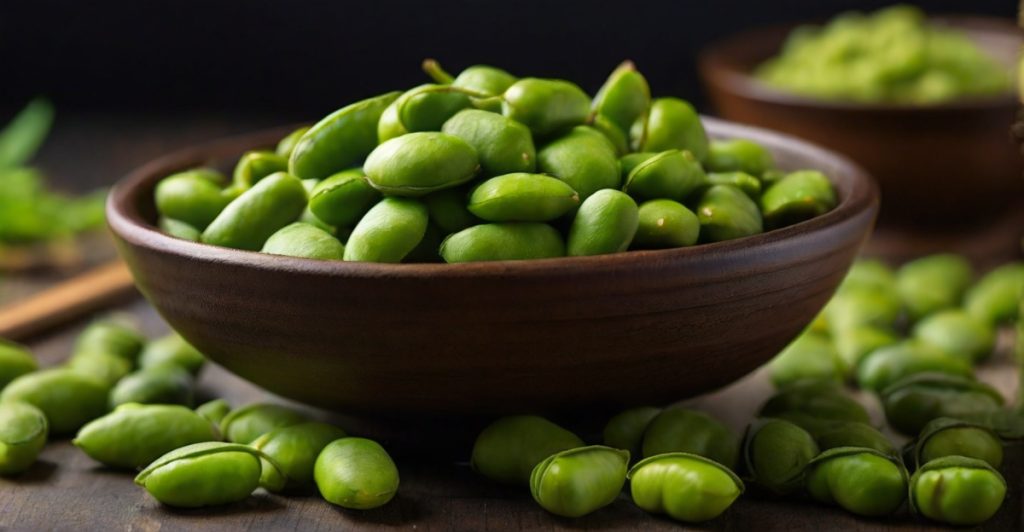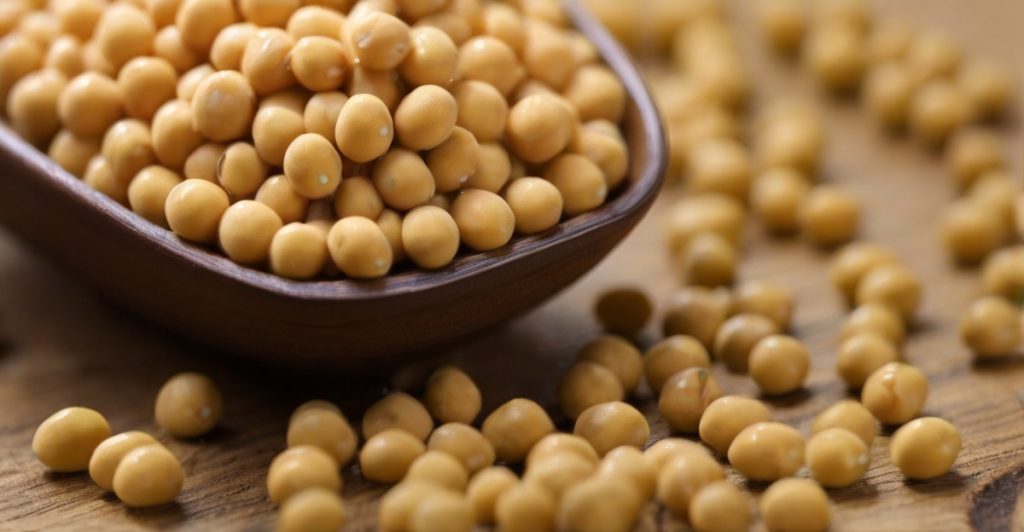Soybean vs Edamame: Surprising Health Benefits and Differences
Explore the culinary face-off between soybean vs edamame in this engaging blog. Unveiling their distinct flavors and nutritional benefits, this comparison will guide you through the diverse world of legumes. Transitioning seamlessly from the origins of these protein-packed powerhouses to their versatile applications in various cuisines, we delve into the active choices one can make for a healthier lifestyle.
Say goodbye to confusion as we simplify the soybean versus edamame dilemma, providing a straightforward perspective on taste, texture, and nutritional value. Join us on this journey to better understand these plant-based protein sources and make informed choices for your next meal.
What is edamame?
Edamame, originating from East Asia, are young soybeans harvested before reaching full maturity. Packed with essential nutrients, these vibrant green pods offer a delightful crunch and a mild, nutty flavor. Transitioning from obscurity to mainstream popularity, edamame has become a global sensation, embraced for its nutritional richness and versatility.

Whether steamed, boiled, or added to salads, edamame serves as a delicious plant-based protein source. Explore the origins, preparation methods, and culinary applications of edamame in this concise guide. Elevate your understanding of this wholesome snack, ensuring you can incorporate its health benefits into your diverse culinary repertoire.
What are soybeans?
Soybeans, integral to diverse cuisines worldwide, are versatile legumes celebrated for their nutritional prowess. Grown in various climates, these beans thrive in both tropical and temperate regions. Transitioning from their cultivation to consumption, soybeans are a powerhouse of protein, fiber, and essential nutrients.

To comprehend their significance, it’s essential to explore their journey from fields to plates. From stir-fries to plant-based milk, soybeans seamlessly adapt to culinary applications. Understanding what soybeans are becomes a gateway to unlocking their potential in crafting wholesome, plant-based dishes that contribute to a balanced and nutritious diet.
How to prepare Soybeans and Edamame
Embarking on a culinary journey with soybeans and edamame opens a world of possibilities for nutritious and flavorful meals. To begin, soak dried soybeans overnight, enhancing their tenderness. Transitioning to cooking, simmer the beans until they achieve a delightful texture, ready to be incorporated into diverse recipes. Edamame, on the other hand, requires a simpler approach: boil or steam the pods until they offer a satisfying crunch.
Transitioning from preparation to seasoning, unleash creativity by infusing these legumes with herbs, spices, or a drizzle of olive oil. Whether you’re crafting a hearty stew with soybeans or adding a pop of protein to salads with edamame, the key lies in embracing their adaptability.
This comprehensive guide navigates you through the active steps, ensuring your soybean and edamame creations are not just nutritious but also bursting with flavors that elevate your culinary expertise.
Soybeans and edamame health benefits
Explore the subtle yet significant distinctions between soybeans and edamame in this enlightening exploration of legumes. Transitioning from the farm to the table, soybeans take the spotlight as mature, protein-packed legumes integral to various cuisines globally. On the other hand, edamame, their younger, vibrant counterpart, emerges as a versatile and nutritious snack.
Diving into their distinctions, soybeans mature on the plant and necessitate cooking, whereas edamame, plucked before full maturity, boasts a tender, palatable quality that requires minimal preparation. These distinctions extend to their culinary applications: while soybeans often find their way into stews and plant-based protein products, edamame shines as a snack or a delightful addition to salads.
Understanding these nuances enhances not only your culinary expertise but also your ability to make informed dietary choices.
Nutritional Comparison between Soybeans and Edamame
Transitioning from the agricultural realm to your plate, soybeans stand out as a nutritional juggernaut, brimming with protein, essential amino acids, and heart-healthy fats. This legume actively fosters muscle development and aids in maintaining a balanced, robust physique. In contrast, edamame, the youthful sibling, commands attention with its unique nutrient profile.
Laden with antioxidants, fiber, and essential vitamins, edamame not only supports digestion but also contributes to cholesterol regulation. Navigating the intricacies of their nutritional compositions, soybeans and edamame present tailored advantages, especially for those seeking plant-based protein sources. Understanding these active distinctions empowers you to align your dietary choices with your specific nutritional goals.
Whether incorporating soybeans into a protein-packed stew or savoring edamame as a nutrient-dense snack, this exploration of their nutritional nuances offers a roadmap for making informed choices, enhancing your overall well-being.
How to Incorporate Soybeans and Edamame in Cooking?
Transitioning from raw ingredients to delectable dishes, soybeans, with their protein-rich profile, can elevate stews, soups, and stir-fries. Actively infuse them into your meals, creating hearty and nutritious options that cater to a plant-based lifestyle. Edamame, on the other hand, steps into the limelight as a versatile ingredient, perfect for snacking or enhancing the texture and nutritional content of salads.
Transitioning from boiling or steaming to stir-frying, edamame effortlessly complements a myriad of flavors. Whether tossed in a vibrant veggie stir-fry or blended into a creamy dip, the adaptability of soybeans and edamame makes them essential additions to your culinary toolkit.
Understanding the active role these legumes play in enhancing both taste and nutrition empowers you to embrace their versatility in crafting flavorful, health-conscious meals.
Summaries
The soybean vs. edamame debate unveils a fascinating journey through diverse flavors, textures, and nutritional landscapes. Transitioning from fields to plates, both legumes actively contribute to a well-rounded, plant-powered diet. Whether you opt for the mature richness of soybeans in hearty stews or the youthful vibrancy of edamame in salads and snacks, the active choices made in the kitchen resonate with broader health implications.
Embracing the versatility of soybeans and edamame ensures a flavorful, protein-packed culinary experience. This exploration not only clarifies their distinctions but also empowers you to make informed, conscious decisions that amplify both taste and well-being in your daily meals.
Adding a layer to the discussion, incorporating Restylane Kysse vs. Juvederm, akin to the soybean-edamame exploration, underscores the importance of informed choices, be it in nourishing your body or enhancing your aesthetic journey. Embracing versatility ensures a holistic approach where both nutrition and aesthetics coalesce for a balanced, well-rounded lifestyle.
FAQs❔ About Soybean vs Edamame
♨ No, soybeans are mature beans, while edamame refers to young, green soybeans harvested before full maturity.
♨ It’s advisable to cook soybeans and edamame before consumption to eliminate any potential harmful substances and enhance digestibility.
♨ Large-scale soybean farming has been linked to deforestation. Sustainable farming practices are crucial to addressing these concerns.
♨ Yes, some individuals may be allergic to soy proteins. It’s essential to be cautious, especially for those with known allergies.
♨ You can add soybeans to salads, soups, or stir-fries and enjoy edamame as a snack, or add them to salads, pasta, or rice dishes.





